One of the most beautiful road trips you can do in Patagonia is the Route of the Seven Lakes, also known as La Ruta de los Siete Lagos.
This is a 107-kilometre drive that stretches between the towns of San Martín de los Andes and Villa La Angostura in the Province of Neuquén. The route goes through two national parks, Lanín National Park and Nahuel Huapi National Park, and it offers spectacular views at every turn.
The Route of the Seven Lakes runs along a scenic stretch of National Route 40, which is the highway that crosses the full length of Argentina from north to south.
Along the drive, travellers are treated to majestic views of snow-capped mountains, crystalline lakes that range from emerald to cobalt blue, and lush greenery.
The best part is that the Route of the Seven Lakes can be driven in one day, and it can be done independently or as part of a guided tour. It’s one of the most beautiful places in Patagonia and well worth experiencing.
In this blog post, we’ll tell you all about this iconic Argentine road trip!
This Seven Lakes day trip departs from Bariloche and includes stops in Villa La Angostura, the seven lakes and numerous lookout points, plus free time to explore the town of San Martin de Los Andes.

Route of the Seven Lakes FAQs
The lakes that make up the Route of the Seven Lakes are Lake Machónico, Lake Escondido, Lake Correntoso, Lake Espejo, Lake Lácar, Lake Falkner, and Lake Villarino. Other lakes accessible through secondary paths include Lake Meliquina, Lake Hermoso, Lake Traful and Lake Espejo Chico.
Aside from the lakes, you can also visit Cascada Vuliñanco, a waterfall; Arroyo Partido, a stream; and Valle del Arroyo Pil Pil, a valley.
If you were to drive the Route of the Seven Lakes without making any stops along the way, it would take just under 2 hours to complete the 107-kilometre route. However, since this is a scenic drive, it really depends on how long you take at each place, but it can be done in one full day.
The Route of the Seven Lakes is flanked by two towns that mark the start and end of the drive: San Martín de los Andes to the north and Villa La Angostura to the south. You’ll first want to get to Bariloche (you can do so via airplane, bus or train) since this is the gateway to Patagonia’s Lake District.
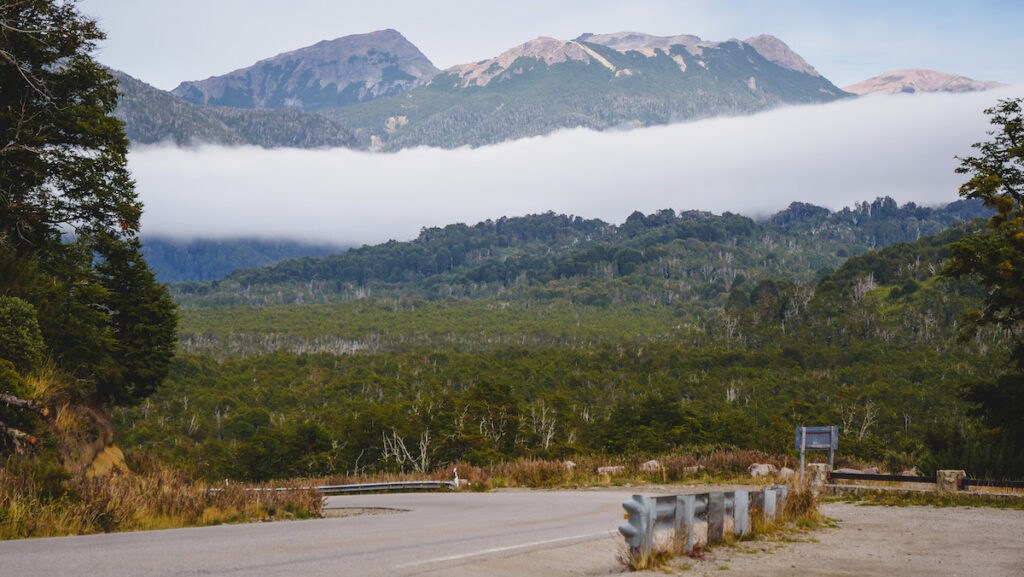
Driving the Route of the Seven Lakes
We chose to experience Patagonia’s Route of the Seven Lakes as part of a guided full-day tour.
We started the day in the town of San Martín de Los Andes, which is the northern tip of this route. Of course, you can also drive the route in the opposite direction.
Tours depart from Bariloche, San Martín de los Andes and Villa La Angostura. If you’re spending a few days in Bariloche, this is a popular day trip you can book.
Almost all tour operators in these towns offer the Seven Lakes tour, so you can book once you arrive in town, or do so online ahead of time.
Lago Machónico
The first lake you hit when leaving the town of San Martín de los Andes is Lago Machónico. This lake is of glacial origin and it offers beautiful views of mountain peaks covered in snow.
Because of its position which shelters it from strong winds, this lake offers a calm setting to go kayaking.
As for the lake’s name, in the Mapuche language machónico means ‘water with pancora’. Pancora are freshwater crabs commonly found in the area that can be seen digging themselves into the pebbles in the lake.
Cascada Vuliñanco
One of the nice surprises of this guided tour was that we didn’t just visit the seven lakes, but we also made stops at other attractions and scenic lookouts along the way.

One such place was the lookout towards Cascada Vuliñanco. The name of this waterfall means ‘hill of the hawk’ in the Mapuche language.
The waterfall is over 20 metres in height and it splits into two veils.
Lago Falkner
The next stop along the Route of the Seven Lakes was Lago Falkner.
Lake Falkner is named after Thomas Falkner, a Jesuit missionary, scientist and explorer who spent almost 40 years conducting studies across Patagonia and is also credited with recording the first fossil in present-day Argentina.
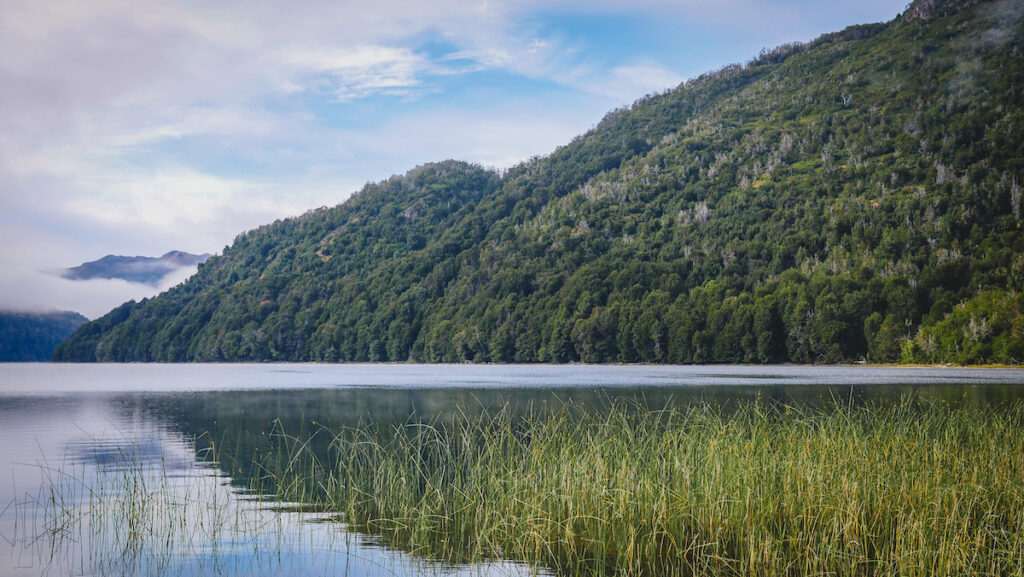
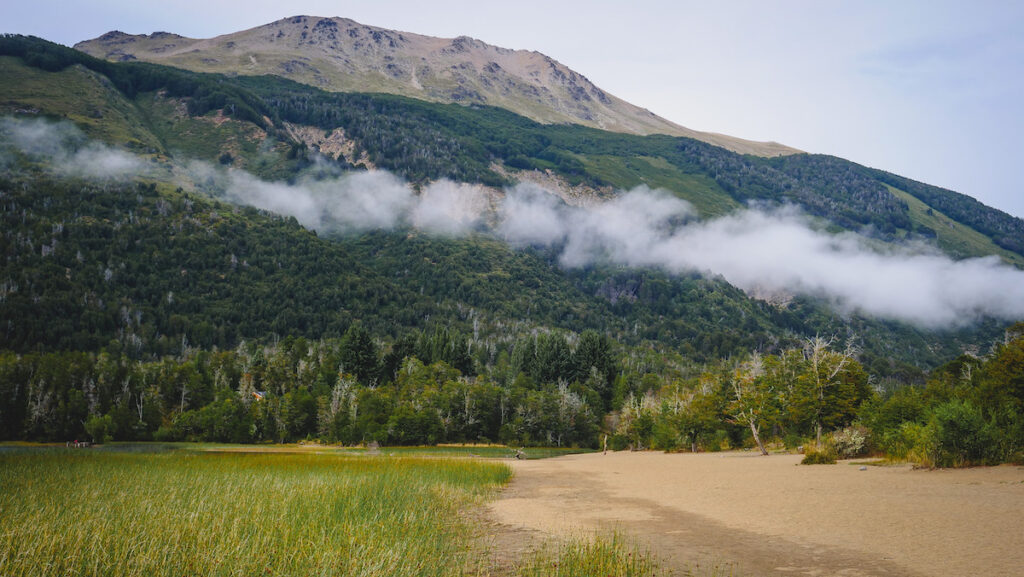
This is another very serene lake with a nice beach, so it’s a nice spot for picnics and a refreshing swim.
For travellers doing this as a self-guided trip, there’s the option of hiking the Cerro Falkner trail which is 8.4 km out and back.
There’s also a camping area at this lake, for those wanting to linger and enjoy the landscapes.
Lago Villarino
Next, we reached Lago Villarino, another pristine lake at the foothills of the Andes Mountains.
This region is home to the huemul, a native Patagonian deer that lives in the highest parts of the mountains.
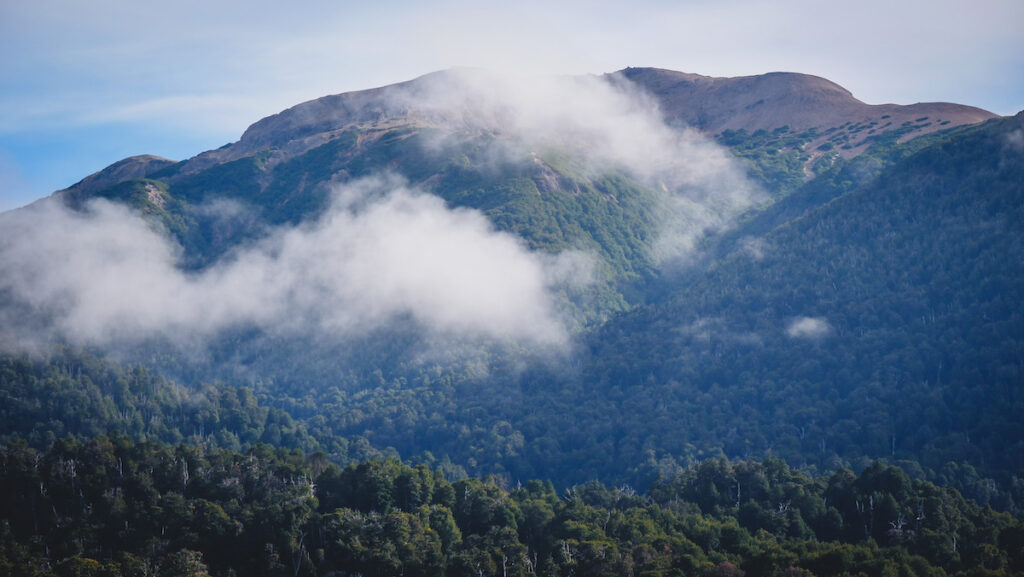

The lake bears the name of Basilio Villarino, a Spanish Royal Navy captain and explorer who travelled around the southern tip of South America and performed a detailed reconnaissance of Patagonia.
You can also find a campsite at this lake.
Lago Escondido
Lago Escondido means ‘hidden lake’ and it is the smallest of the seven lakes along this famous route.
This lake is surrounded by trees, especially coihué, and the reflection of the surrounding foliage causes the lake to have an emerald colour.
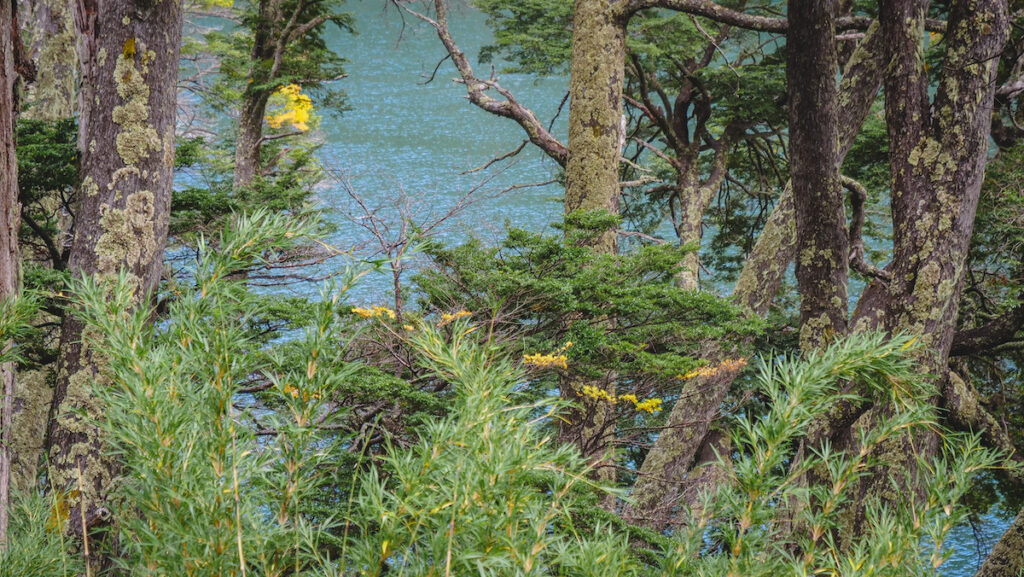

The forest around this lake is also home to the pudu, the smallest deer in the world which only stands between 32 to 44 centimetres tall!
The pudu is a very solitary animal whose behaviour is still largely unknown due to its secretive nature.
Lago Correntoso
The next place we visited along the Route of the Seven Lakes was Lago Correntoso.
This lake is fed by Lago Espejo via a river, which explains its name which translates to ‘lake with a current’, however, the lake waters are quite calm.
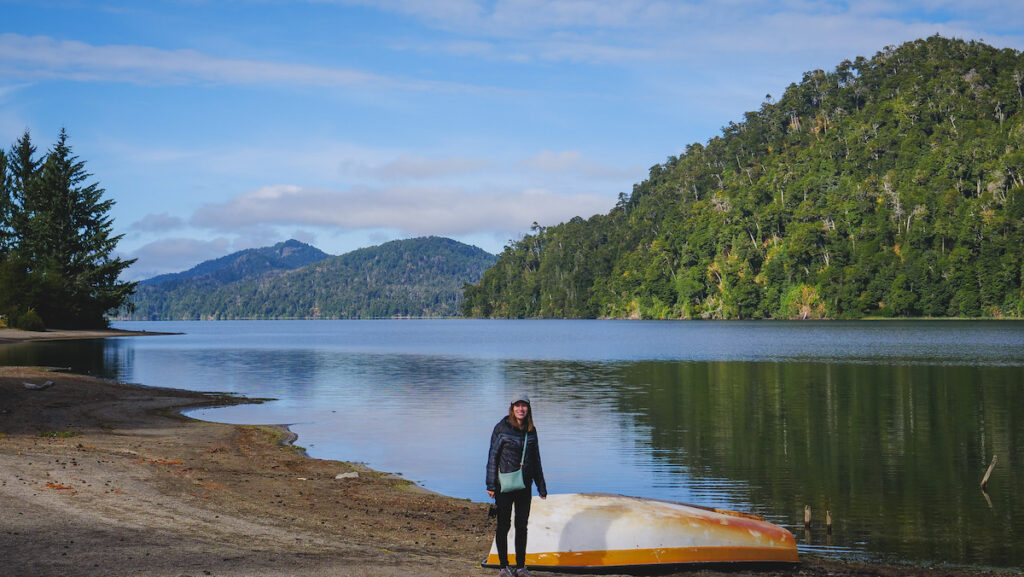
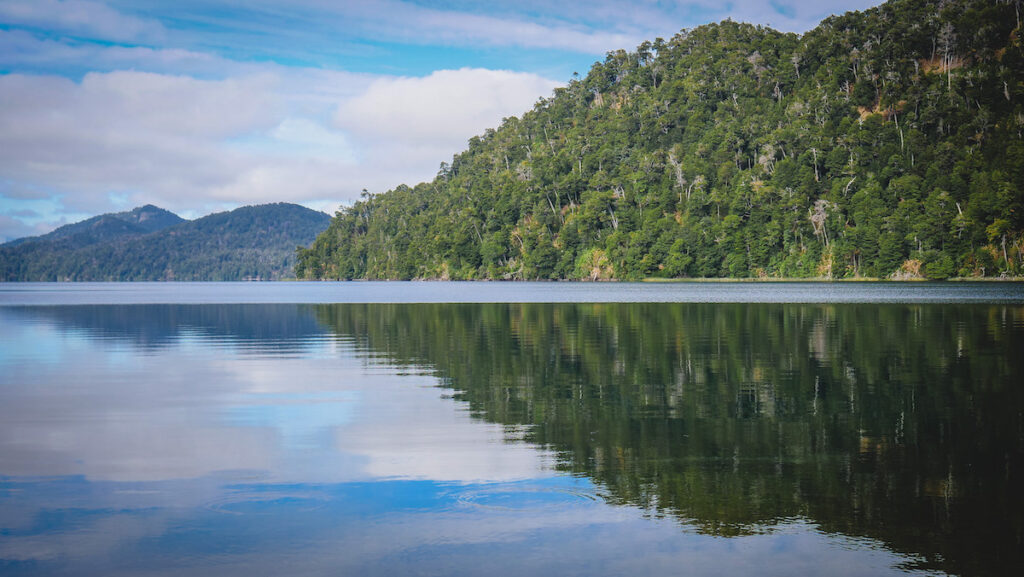
Lago Correntoso is the biggest of the seven lakes, and it’s also the lake with the warmest waters, for those looking for a summer swim. Though keep in mind this is Patagonia and not the Caribbean!
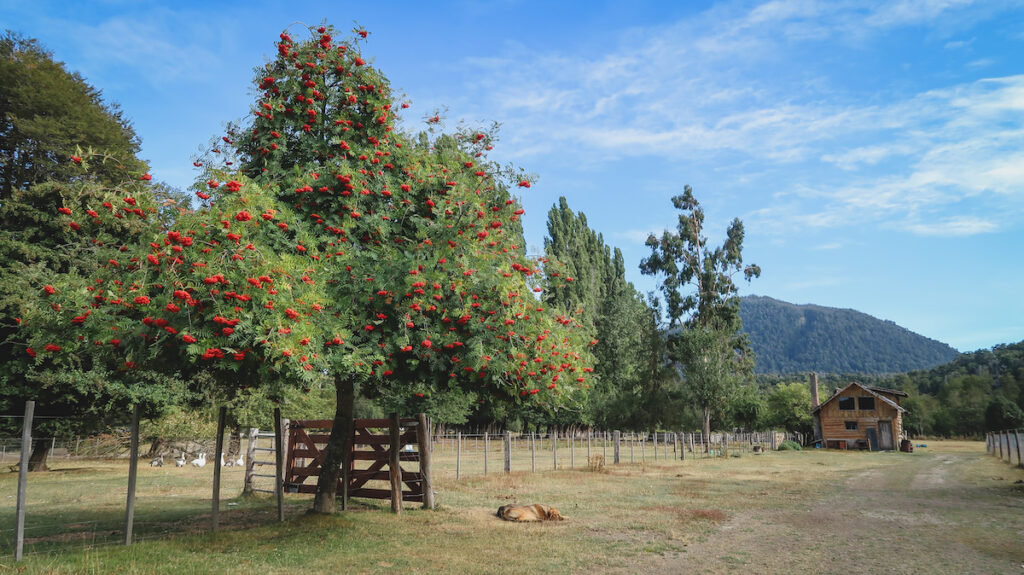
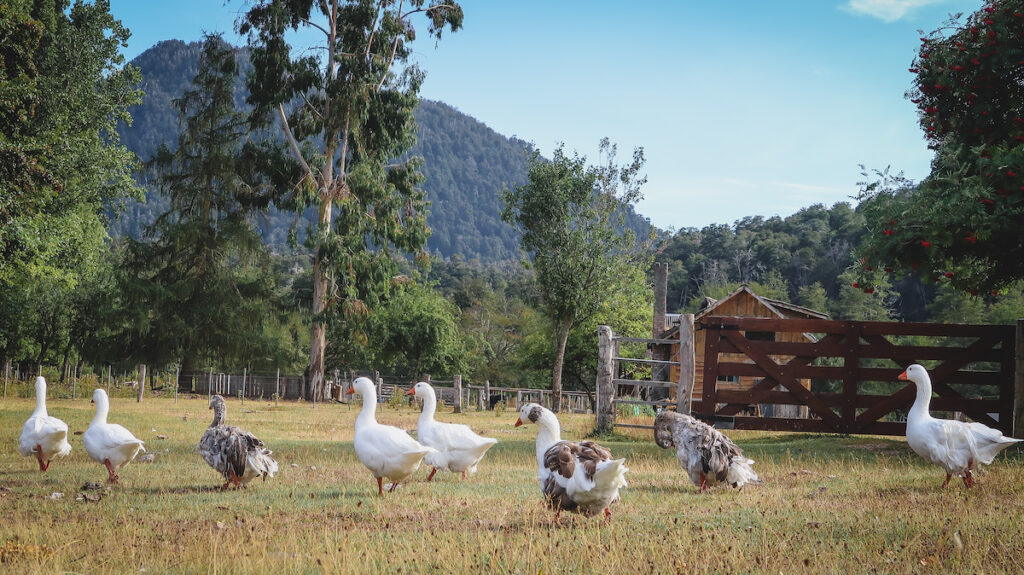
During our excursion, we stopped at Hosteria 7 Lagos, which sits on the shores of Lago Correntoso. There’s a guesthouse and camping site here, and we got to explore the farm and meet all sorts of animals like ducks, geese, cats and dogs.
We also had the opportunity to get some coffee and tortas fritas, a savoury donut made with lard.
Lago Espejo
Next on our road trip of the Seven Lakes was Lago Espejo, meaning ‘mirror lake’.
This lake gets its name from its mirror-like waters, which are super calm and reflect the surrounding mountains and forest in the water.

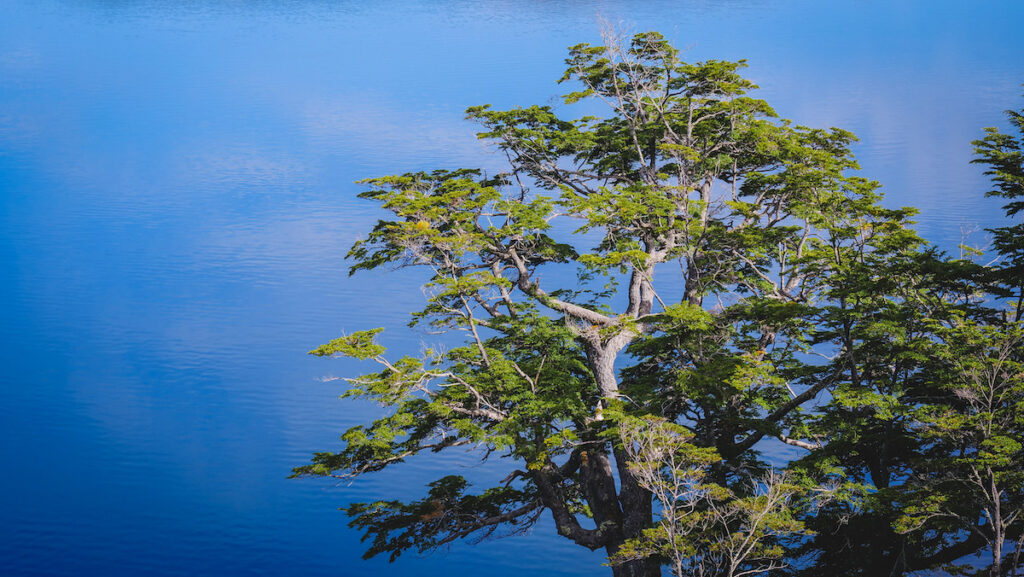
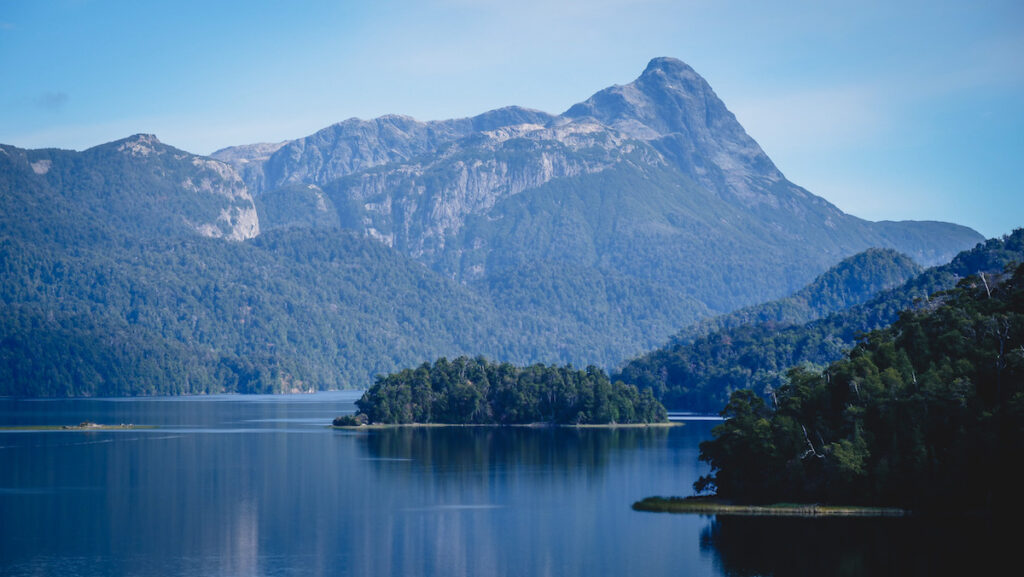
The lake is fed by numerous streams bringing snow and ice melt from the surrounding mountains. It also features volcanic sand beaches, so it draws day visitors, especially during the summer months.
Lago Nahuel Huapi
The final lake we visited along the Route of the Seven Lakes was Lago Nahuel Huapi.
The lake’s name derives from the Mapuche language – ‘nahuel’ means puma and ‘huapí’ means island, so it is the ‘island of the puma’.
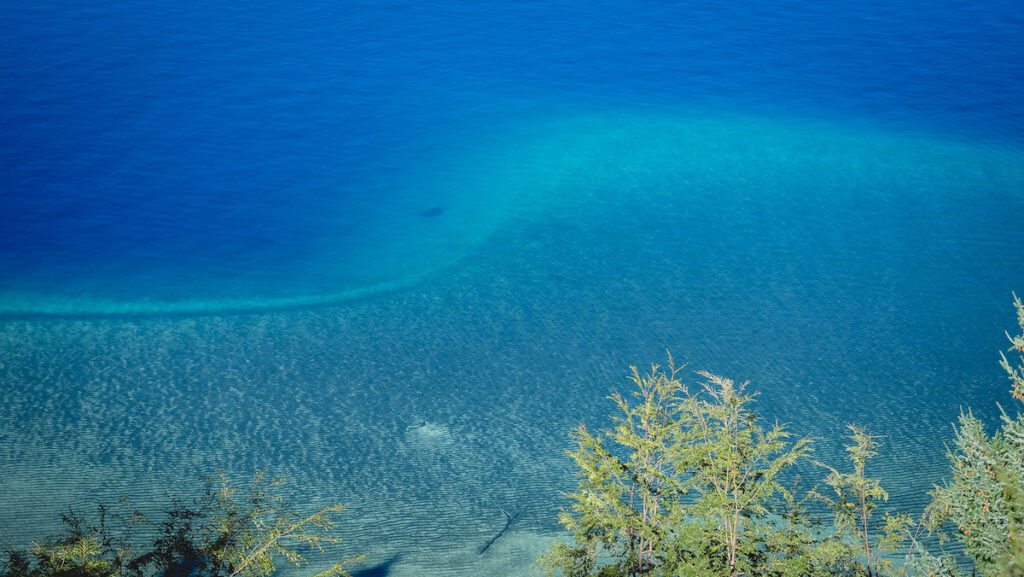

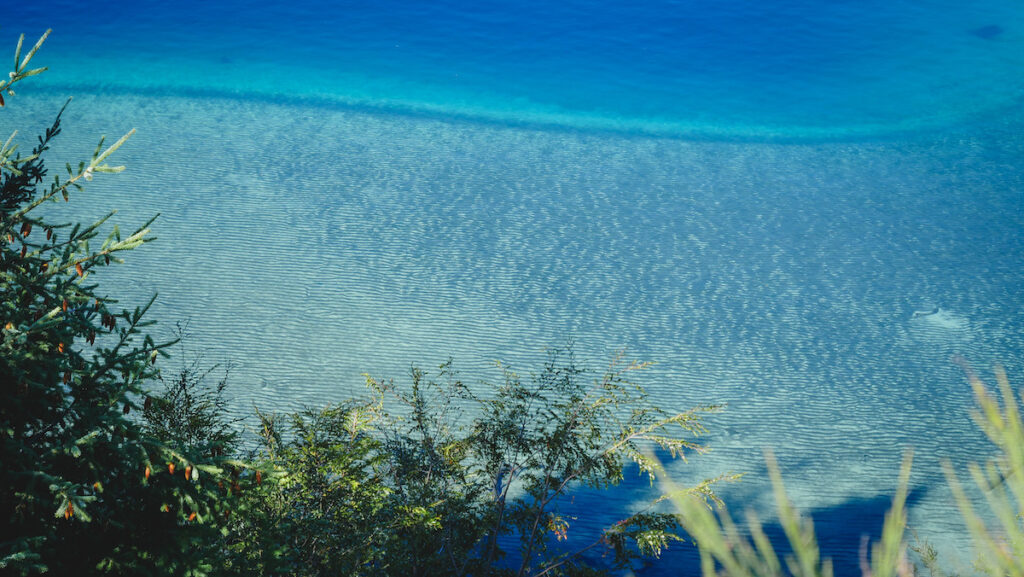
The lake is located within Nahuel Huapi National Park, which is the oldest national park in Argentina having been established in 1934.
For those lingering in the area beyond this road trip of the Seven Lakes, there’s a popular day trip to Isla Victoria where you can cruise the waters of Lago Nahuel Huapi and really soak in the scenery.
Villa La Angostura
The town of Villa La Angostura marks the end of the Route of the Seven Lakes if you’re travelling from north to south.
During this guided tour we had some time to explore a few highlights around town and the surrounding area.
First, we stopped in Puerto Manzano, which is a resort area just 7 kilometres south of Villa La Angostura.
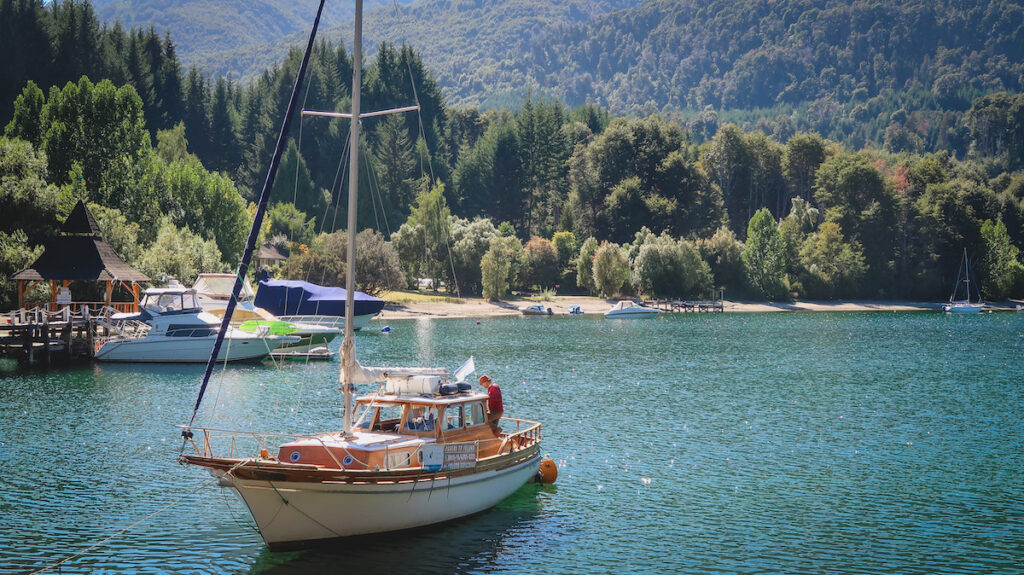
Here you’ll find lots of hotels, cottages and holiday rentals, and since this is a port, you can also expect lakeside beaches and plenty of sailboats and pleasure crafts.
We had some free time to walk around the port and snap a few photos.
Next, we had about 30 minutes to visit the 2 bays in Villa La Angostura: Bahia Brava meaning ‘wild bay’ due to its choppy waters, and Bahia Mansa meaning ‘calm bay’.
The two bays are located across from each other and you can walk from one to the other in 5 minutes, so be sure to visit both!
Lunch at El Esquiador
Our tour did not include lunch, which was actually a great thing because there are so many great restaurants and breweries in the town of Villa La Angostura, and it’s nice to be able to choose where you want to eat!
Since we had already spent a few days in Villa La Angostura earlier in our Patagonia trip, we knew we wanted to go back to our favourite restaurant: El Esquiador, meaning ‘the skier’.
This is a bodegón-style restaurant and in Argentina that means classic dishes, large portions, and no-frills dining.
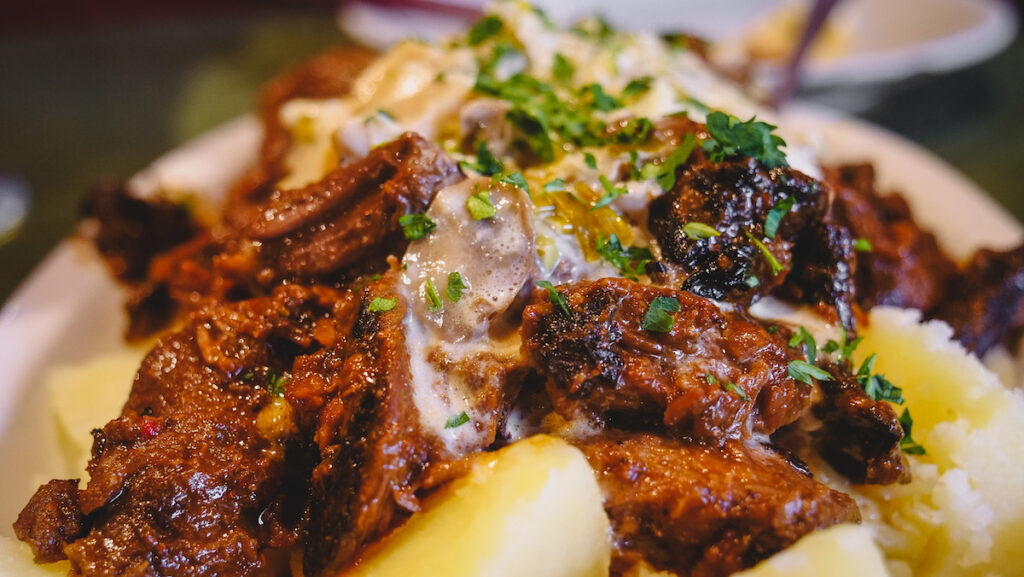
If you’re interested in trying a local Patagonian dish, you cannot go wrong with their hunter’s stew with deer, potatoes and mushrooms.
Pair that with a bottle of Argentine wine, preferably a Malbec or Cabernet Sauvignon and you’ve got yourself an exquisite meal!
For dessert, we had the flan with dulce de leche – a classic Argentine staple.

Afterwards, we had a bit of time to enjoy Villa La Angostura before meeting up with our group again, so we went for a walk down the main promenade which is lined with souvenir shops, chocolate shops and all sorts of cafes and restaurants.
This is a super charming town and really worth a longer visit if you’re travelling through northern Patagonia.
And then, it was time to drive back to the town of San Martín de los Andes, where we started the excursion.
Here’s the video of our experience visiting the Route of the Seven Lakes on a guided tour:
GROUP TOURS – If you’d rather join a group tour to travel in Argentina, check out Gadventures.
CAR RENTAL – To explore Argentina beyond the cities, the best way to do so is by renting a car. Discover Cars offers rentals across the country.
BUS TICKETS – Bus travel is a great way to see Argentina. BusBud offers numerous routes.
TRAVEL INSURANCE – Don’t leave on your trip without booking travel insurance. You can get a quote on SafetyWing.
HOTELS – Booking.com offers accommodations to suit all budgets and travel styles.
TOURS – For a variety of tours and activities, have a look at Viator.
